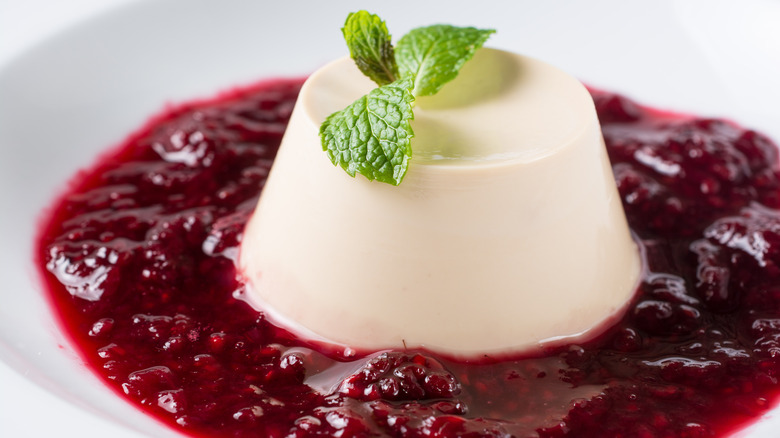The Key Difference Between Raspberry Sauce And Coulis
In many parts of the U.S., raspberries are abundant throughout the summer season, and one sweet way to enjoy these succulent, tart berries is by cooking them down with sugar. But if you want to get beyond jam, there are two additional methods for doing so — one being a sauce, and the other, a coulis. And while the two might appear and even taste similar, the difference between them comes down to the final texture.
The preparation of both begins by simmering raspberries (either fresh or frozen) with sugar, water, a little salt, and sometimes lemon. However, once the fruit breaks down, what you do with the resultant mixture is where sauce and coulis diverge. Where a sauce retains much of the pulp and often seed, a coulis is puréed and then strained through a fine mesh sieve for a thinner, silkier mixture. Typically, a coulis is also thickened with a cornstarch slurry, and butter is melted into it for a sweet, rich finish.
A coulis is a pureed and strained sauce
Though it's one of the best examples of it, a coulis can be crafted from fruits other than raspberries, or even peppers, for more savory applications. These vegetable coulis can be served as a sauce accompaniment or even be a marinade for various meats. Often liquor, various acids, or fruit juices are added to the simmer of the runny coulis to balance or enhance the fruit's natural tartness.
When sticking to a raspberry or fruit coulis, however, which you decide on really comes down to whether you want a rich, thin sauce or one with more body and texture. Maybe you'd find a strained purée, or coulis, more appropriate for spooning over ice cream for movie night or into yogurt for the mornings. Perhaps you find that having larger pieces of raspberries that burst in your mouth upon a bite atop pancakes or over oatmeal is the more berryful, textural experience you're looking for from a sauce. Either way, whether it's silky smooth or more jam-like, both the raspberry sauce and coulis make a delicious way to preserve and taste the fruit any time of year.

